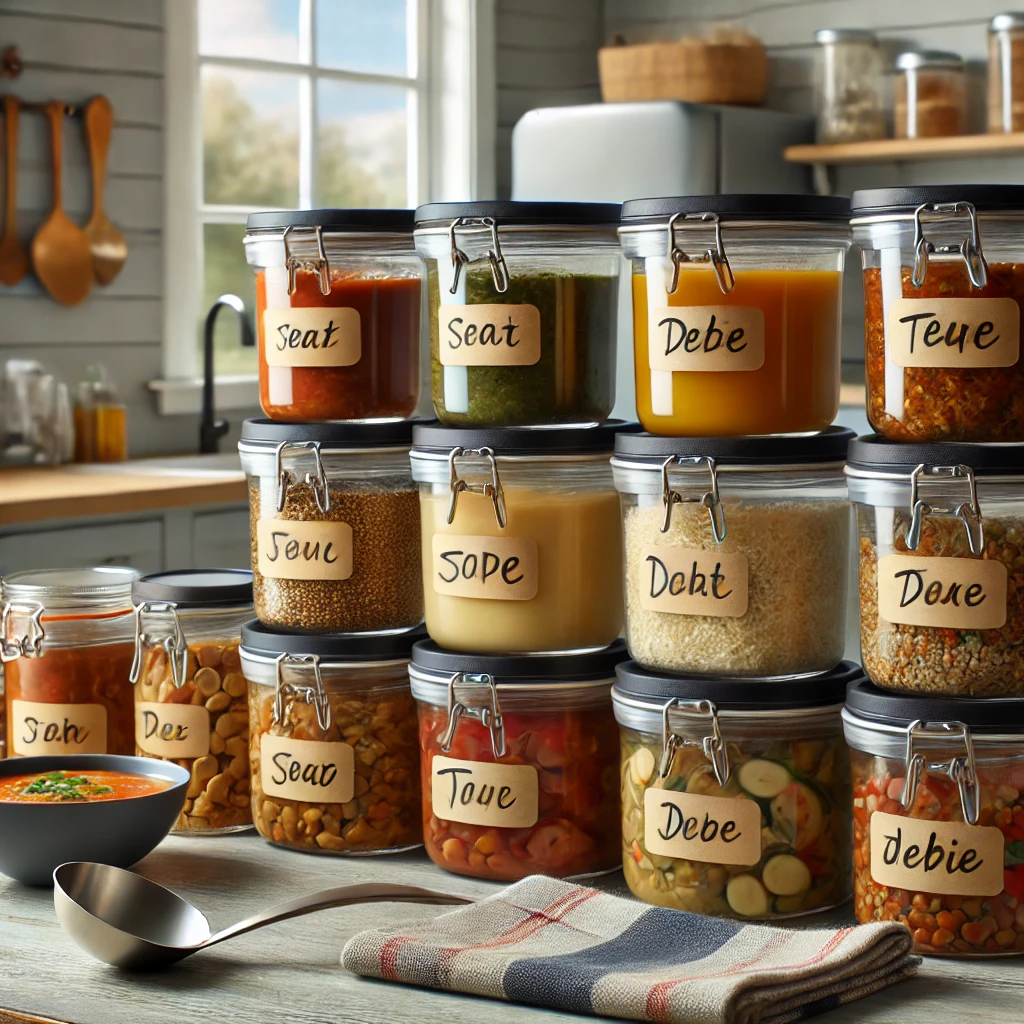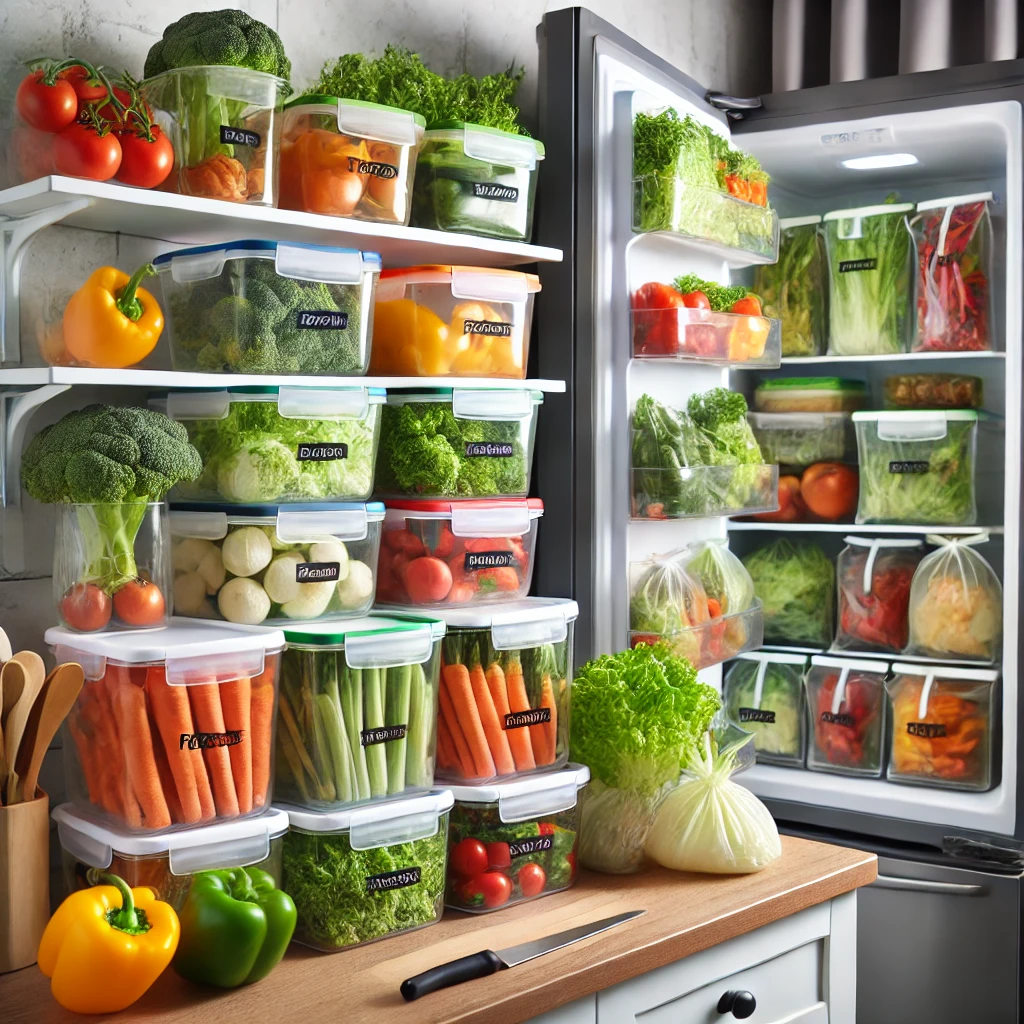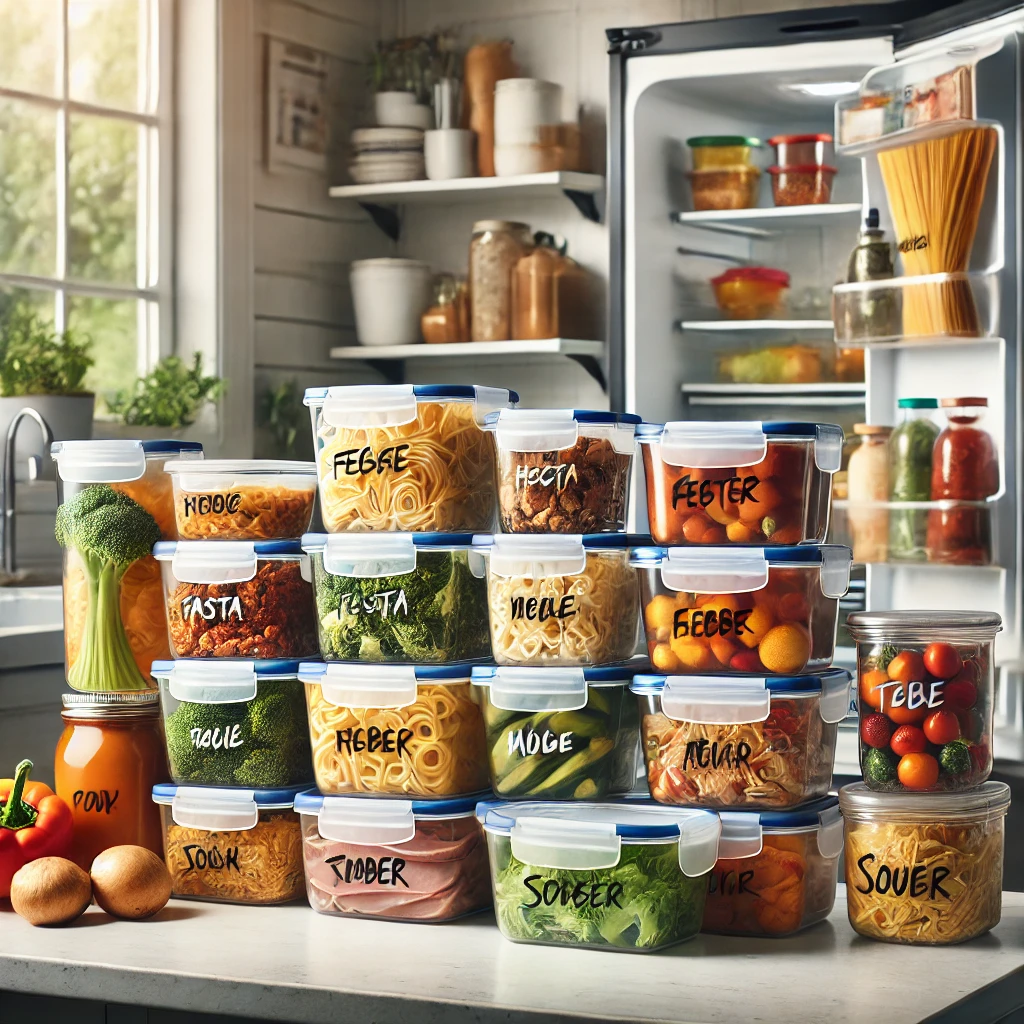Introduction
Storing leftovers properly is essential to maintaining their taste, texture, and safety. Whether you’ve made a big meal or ordered too much takeout, learning how to store leftovers correctly will help reduce food waste and ensure your meals stay fresh for days. In this guide, we’ll cover the best methods for storing different types of leftovers, from cooked meats and pasta to soups and vegetables, with tips to keep your food safe and delicious.
General Tips for Storing Leftovers
- Cool Food Quickly: Before storing, let hot foods cool down to room temperature but avoid leaving them out for more than two hours. Rapid cooling helps prevent bacteria growth.
- Use Airtight Containers: Always store leftovers in airtight containers to lock in freshness and prevent moisture loss. This also helps to keep your fridge organized and prevents cross-contamination.
- Label and Date: Label each container with the name of the food and the date it was prepared. This will help you keep track of how long the leftovers have been stored.
- Store in Small Portions: Dividing leftovers into smaller portions makes reheating faster and more even. This also allows you to grab the exact amount you need without defrosting the entire batch.
How to Store Different Types of Leftovers
1. Storing Cooked Meats
- Refrigerate: Place cooked meats in airtight containers and refrigerate within two hours of cooking. Meats can be stored in the fridge for 3-4 days.
- Freezing: If you want to keep cooked meats longer, freeze them in airtight freezer bags. Label and date each bag, and consume within 2-3 months for the best quality.
2. Storing Pasta and Rice

- Refrigerate: Cooked pasta and rice should be stored in airtight containers in the fridge and consumed within 3-5 days.
- Add a Bit of Oil: Before refrigerating, add a small amount of olive oil to prevent the pasta or rice from sticking together.
- Freezing: Both pasta and rice can be frozen for up to 2 months. Ensure they are cooled completely before placing them in freezer-safe bags.
3. Storing Soups and Stews

- Cool Quickly: Let soups and stews cool to room temperature before transferring them to containers. Avoid leaving them out for too long to prevent bacteria growth.
- Portion Control: Store in individual portions for easy reheating. Soups and stews can be kept in the fridge for 3-4 days or frozen for up to 3 months.
4. Storing Vegetables

- Refrigerate Promptly: Cooked vegetables should be refrigerated within two hours and stored in airtight containers. They generally last 3-5 days in the fridge.
- Avoid Freezing Certain Vegetables: While most vegetables can be frozen, some like lettuce and cucumbers do not freeze well due to their high water content.
RELATED : Best Meat Substitutions: How to Use Different Types of Meat in Recipes
Reheating Leftovers Safely
- Reheat Thoroughly: Make sure to reheat leftovers to at least 165°F (74°C) to kill any potential bacteria.
- Stir Well: When reheating soups, stews, or casseroles, stir them well to ensure even heating.
- Avoid Multiple Reheats: Only reheat the amount you plan to eat. Repeated reheating can dry out the food and increase the risk of bacterial growth.
Best Practices for Freezing Leftovers
- Use Freezer-Safe Containers: Use airtight, freezer-safe bags or containers to prevent freezer burn and maintain food quality.
- Leave Space for Expansion: Liquids like soups and stews expand when frozen, so leave some space at the top of the container.
- Freeze in Portions: Freeze leftovers in single-serving portions to make defrosting and reheating easier.
Frequently Asked Questions
How Long Can Leftovers Be Stored in the Fridge?
Most leftovers can be safely stored in the fridge for 3-4 days. If you don’t plan to eat them within this time frame, it’s best to freeze them to prevent spoilage.
Can You Store Leftovers in the Original Cooking Pot?
It’s better to transfer leftovers to airtight containers instead of storing them in the original pot. This helps retain freshness and prevents odor transfer between foods in the fridge.
Conclusion
Storing leftovers properly is key to minimizing food waste and ensuring you always have a delicious meal on hand. By following these simple tips and guidelines, you can keep your leftovers fresh, safe, and ready to enjoy. Remember to label your containers, use airtight storage, and reheat your food thoroughly for the best results. Happy storing!

